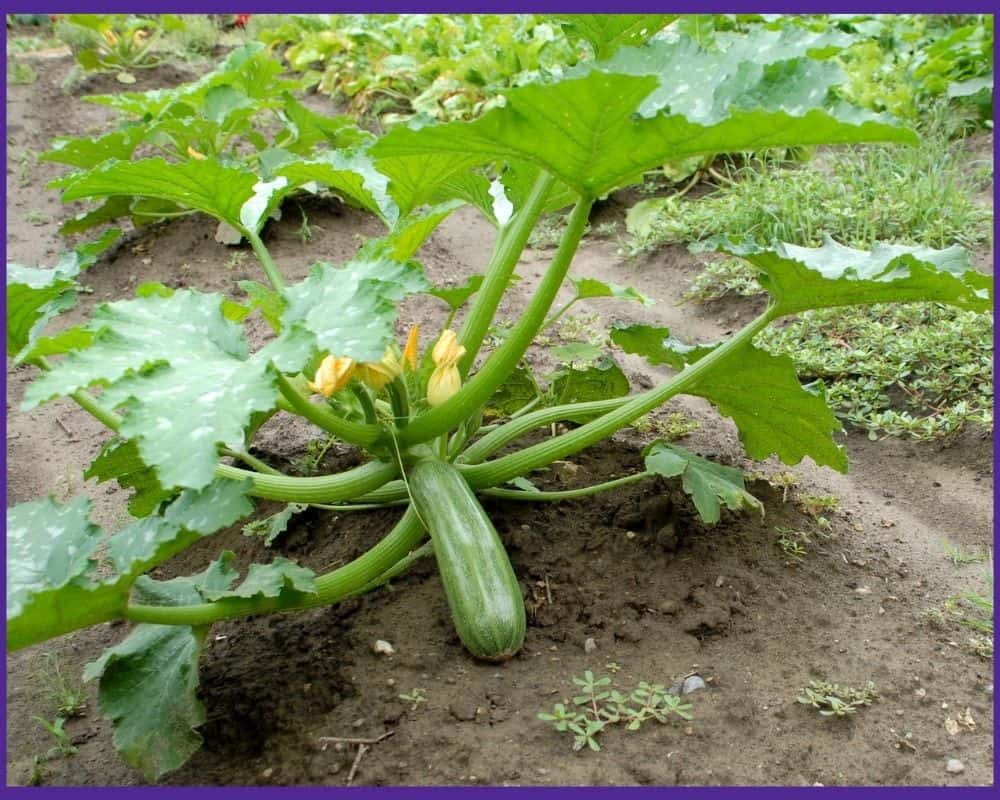Zucchini is a versatile and delicious vegetable that many gardeners love to grow. However, knowing the right spacing for planting zucchini can make all the difference in ensuring healthy and bountiful harvests. In this article, you will discover the ideal distance to plant zucchini in your garden, enabling you to maximize your yield and enjoy the delights of this summer squash to the fullest. So, grab your gardening gloves and get ready to learn the secrets of successful zucchini cultivation.
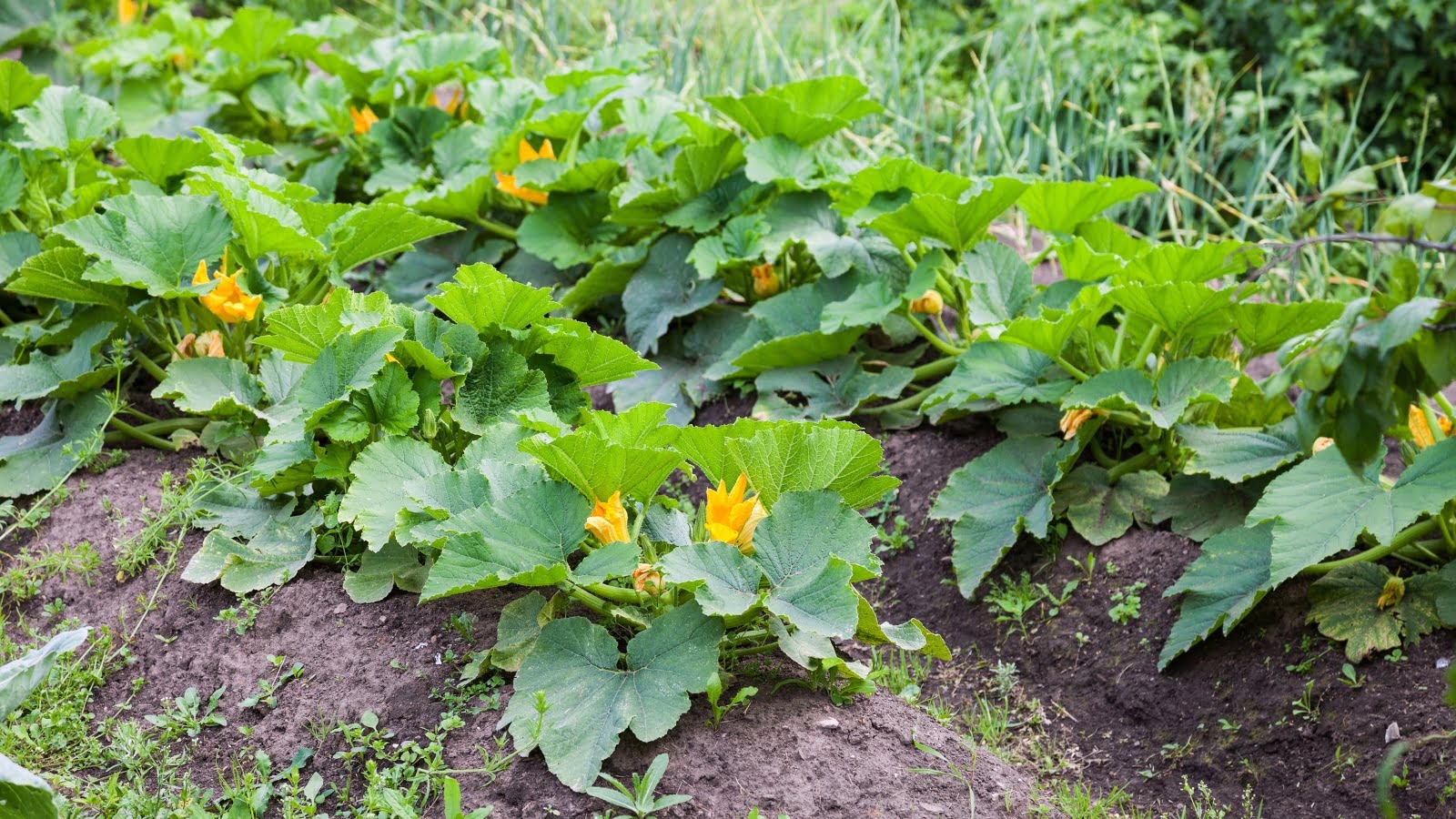
Spacing Considerations
Importance of proper spacing
When it comes to planting zucchini, proper spacing is of utmost importance. Giving your zucchini plants the right amount of space allows them to grow and thrive, ensuring maximum productivity and minimizing the risk of diseases and pest infestations. Adequate spacing provides enough room for air circulation, sunlight exposure, and nutrient uptake, leading to healthier plants and higher yields.
Factors to consider when determining spacing
There are several factors to consider when determining the spacing for your zucchini plants. First and foremost, consider the variety you are planting. Different zucchini varieties have varying growth habits, with some being more compact and bushy, while others are sprawling and vining. The anticipated size of the mature plants will help gauge the necessary spacing. Additionally, consider the available space in your garden and the overall layout of your planting beds. Providing enough space between plants and rows will ensure that each zucchini plant has enough room to spread its leaves and roots without competing for resources.
Recommended spacing for zucchini plants
The recommended spacing for zucchini plants depends on whether you are direct seeding or transplanting. For direct seeding, it is recommended to have a row spacing of 3 to 4 feet (0.9 to 1.2 meters). This spacing allows ample room for the zucchini plants to grow without crowding each other. In terms of individual plant spacing, aim for 2 to 3 feet (0.6 to 0.9 meters) between each zucchini plant. This spacing gives the plants enough space to develop their leaves and avoid overcrowding.
Garden Bed Preparation
Preparing the soil
Before planting your zucchini, it is essential to prepare the soil adequately. Start by removing any weeds or debris from the planting area. Zucchini plants thrive in well-drained soil, so consider incorporating organic matter, such as compost or well-rotted manure, to improve soil structure and drainage. Using a garden fork or tiller, loosen the soil to a depth of around 8 to 10 inches (20 to 25 centimeters), ensuring it is crumbly and friable for healthy root development.
Improving soil drainage
Proper soil drainage is crucial for the success of your zucchini plants. If your soil tends to retain water and become waterlogged, it is essential to improve its drainage capabilities. You can achieve this by incorporating organic matter, such as compost or aged manure, into the soil. These organic materials help improve soil structure, allowing excess water to drain away from the roots of your zucchini plants. Additionally, planting your zucchini in raised beds or mounds can also improve drainage by elevating the planting area.
Adding organic matter
Adding organic matter to your garden bed is beneficial for various reasons. Aside from enhancing soil drainage, organic matter also improves soil fertility by providing essential nutrients for plant growth. Moreover, it helps the soil retain moisture, reducing the frequency of watering. Before planting your zucchini, consider incorporating well-rotted compost, aged manure, or other organic materials into the soil. Work the organic matter into the top few inches of soil to ensure it is evenly distributed and easily accessible to the zucchini roots.
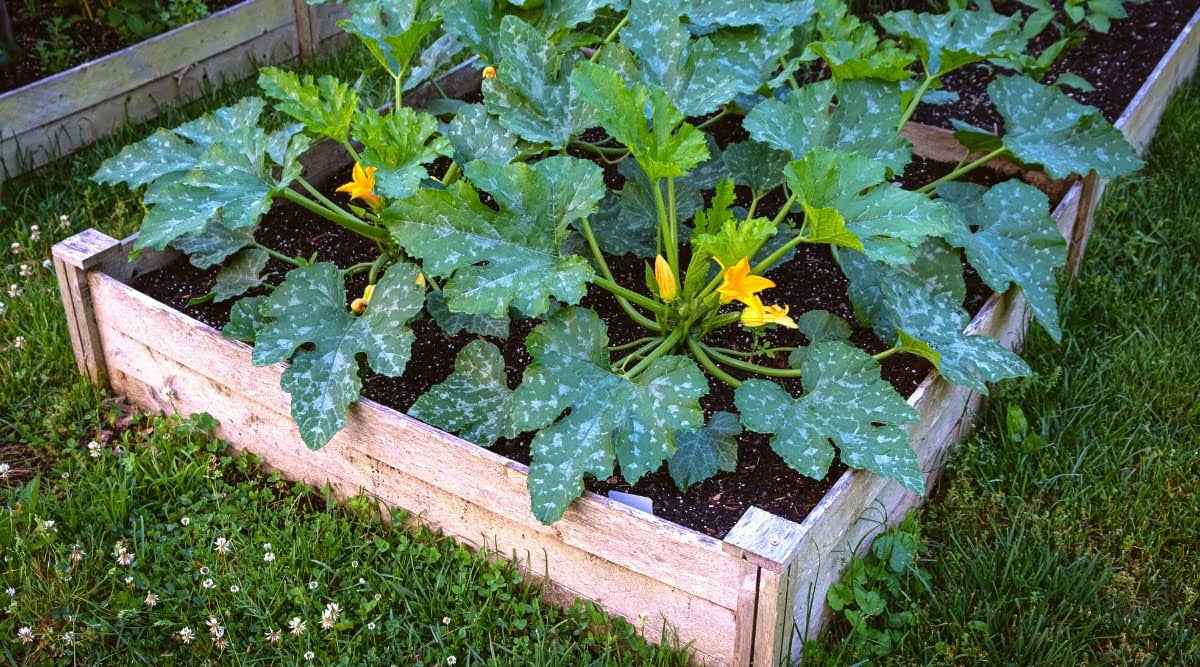
Direct Seeding vs. Transplanting
Advantages of direct seeding
Direct seeding involves planting zucchini seeds directly into the garden bed where they will grow to maturity. One of the major advantages of direct seeding is that it saves time and effort since there is no need to start the plants indoors or transplant them later. It also allows for a more continuous and extended harvest period as the plants mature at different times. Direct seeding is a cost-effective method and is suitable for gardeners with limited space or those who prefer a more natural and hands-on approach to gardening.
Advantages of transplanting
Transplanting zucchini involves starting the plants indoors or in a greenhouse and later moving them to the garden bed once they have reached a certain size. One key advantage of transplanting is that it allows for an earlier harvest since the plants have a head start indoors. Transplanting also provides an opportunity for better control over the growing conditions, such as temperature and moisture levels. This method is particularly useful in regions with short growing seasons or for gardeners who want to maximize their zucchini production.
Considerations for each method
When deciding whether to direct seed or transplant your zucchini plants, several considerations come into play. If you have a short growing season, starting the plants indoors and transplanting them can give you a jumpstart on the growing season. Additionally, if you want to ensure a higher survival rate for your plants, transplanting allows you to control the conditions during the vulnerable early stages. On the other hand, if you have ample space and time, direct seeding can be a simple and efficient method. It’s important to evaluate your specific growing conditions, resources, and goals when choosing between the two methods.
Spacing Guidelines for Direct Seeding
Row spacing
When directly seeding zucchini, it is crucial to have adequate row spacing. This spacing determines the distance between each row of zucchini plants and plays a vital role in providing enough room for growth and ease of maintenance. For direct seeding, aim for a row spacing of 3 to 4 feet (0.9 to 1.2 meters). This spacing ensures that the zucchini plants have ample space to spread their leaves and prevents them from overcrowding each other. Proper row spacing allows for better air circulation, reduces the risk of disease, and makes it easier to weed and harvest.
Individual plant spacing
In addition to row spacing, individual plant spacing is equally important in direct seeding. Providing enough space between each zucchini plant is key to their healthy development and productivity. Aim for a spacing of 2 to 3 feet (0.6 to 0.9 meters) between individual zucchini plants. This spacing gives each plant enough room to grow and expand its foliage without competing for resources. Sufficient plant spacing allows for proper airflow and sunlight penetration, reducing the risk of fungal diseases and promoting vigorous growth.
Alternatives to traditional spacing
While traditional spacing guidelines for direct seeding zucchini involve specific distances between rows and plants, there are alternative methods you can explore. One popular alternative is the practice of square foot gardening. In this method, the planting area is divided into small square foot sections, and zucchini plants are placed in each section based on their space requirements. This approach maximizes the use of space and allows for companion planting and intercropping. Additionally, vertical gardening, such as using trellises or supports, can be employed to save space and promote upward growth for zucchini plants.
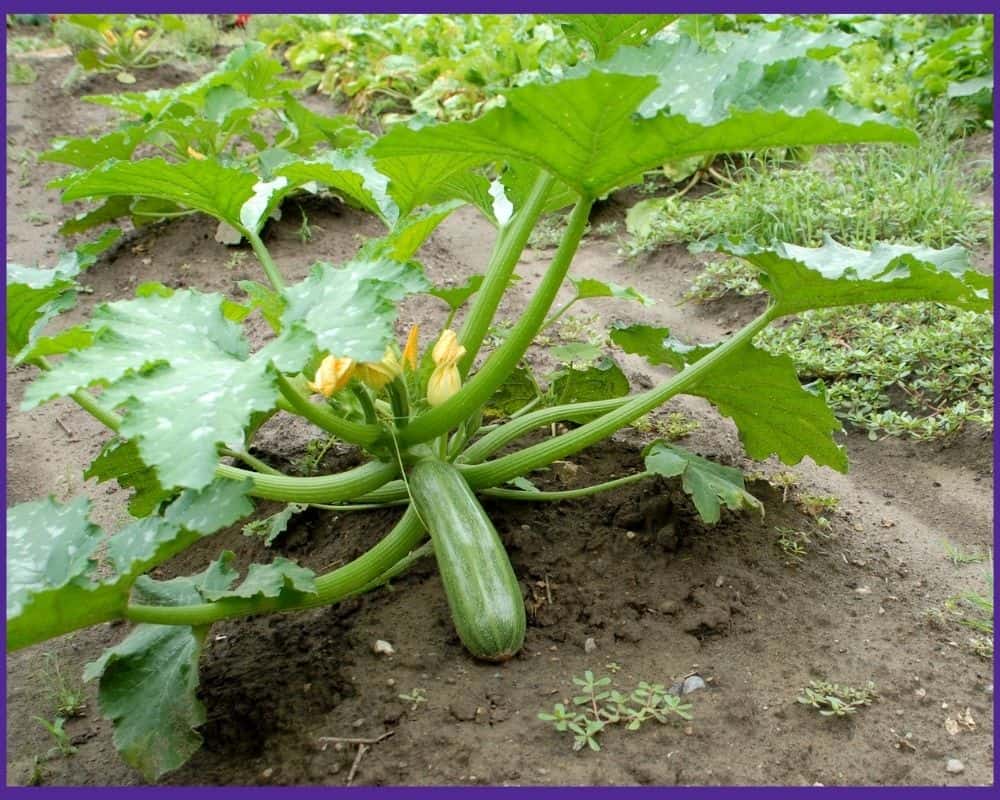
Spacing Guidelines for Transplanting
Row spacing
When transplanting zucchini, providing the appropriate row spacing is crucial for optimal plant growth. The spacing between rows determines the distance between each row of zucchini plants and ensures proper airflow, sunlight exposure, and ease of maintenance. For transplanting, aim for a row spacing of 3 to 4 feet (0.9 to 1.2 meters). This spacing allows enough room for the zucchini plants to spread their foliage without overcrowding each other. Proper row spacing also facilitates efficient watering, weeding, and harvesting.
Hill spacing
Zucchini plants can be grown in hills, which are mounds of soil that provide better drainage and create a warmer microclimate for the plants. When transplanting zucchini in hills, proper spacing between each hill is vital. Aim for a hill spacing of 3 to 6 feet (0.9 to 1.8 meters) to allow adequate room for each zucchini plant to grow and develop. This spacing accommodates the plants’ sprawling nature while ensuring they have enough space to access nutrients and sunlight. Overall, hill spacing promotes healthy plant growth, reduces competition, and improves air circulation around the plants.
Transplant distance from other plants
When transplanting zucchini, it is essential to consider the distance between the zucchini plants and other neighboring plants. Zucchini plants are known for their vigorous growth, and they can quickly dominate a garden bed if not given enough space. Aim for a distance of 2 to 3 feet (0.6 to 0.9 meters) between transplanted zucchini plants and other plants in the vicinity. This spacing allows for proper air circulation, reduces the risk of disease, and prevents shading of other plants. Additionally, maintaining enough distance between plants makes it easier to access and tend to each individual plant.
Companion Planting
Benefits of companion planting
Companion planting involves strategically planting certain plants together to enhance their growth and repel pests or attract beneficial insects. When it comes to zucchini, companion planting offers several benefits. Certain companion plants can help deter pests, improve pollination, provide shade, or enhance nutrient uptake. Additionally, companion planting can save space, maximize garden productivity, and create a more diverse and resilient ecosystem. By choosing suitable companion plants for zucchini, you can create a harmonious garden where each plant benefits from its neighbors.
Suitable companion plants for zucchini
When selecting companion plants for zucchini, it is important to consider their compatibility and the benefits they provide. Suitable companion plants for zucchini include herbs such as basil and dill, which can help repel pests and attract beneficial insects. Additionally, flowers like marigolds and nasturtiums can deter pests and add a splash of color to your zucchini patch. Other suitable companions for zucchini include beans, peas, and radishes, which can help improve soil fertility and provide shade to the zucchini plants. Experiment with different combinations to find the best companions for your zucchini plants.
Spacing recommendations for companion plants
To ensure the success of companion planting with zucchini, it is essential to consider the spacing between the zucchini plants and their companion plants. Aim for a spacing of 1 to 2 feet (0.3 to 0.6 meters) between zucchini plants and their companion plants. This spacing allows each plant to have enough access to sunlight, water, and nutrients without competing for resources. Additionally, proper spacing facilitates airflow, reduces the risk of disease, and promotes healthy plant growth. Be mindful of the specific requirements of each companion plant and adjust spacing accordingly.

Intercropping with Zucchini
Benefits of intercropping
Intercropping involves planting different crops in close proximity to maximize space utilization and create a mutually beneficial growing environment. When intercropping with zucchini, several benefits can be achieved. Intercropping allows for efficient space usage, diversifies the garden, and promotes pest management through companion planting. It also enhances nutrient cycling and soil health by incorporating different plant species. Intercropping with zucchini can lead to increased yields and a more resilient and balanced garden ecosystem.
Compatible plants for intercropping
Selecting compatible plants for intercropping with zucchini is crucial for successful results. Some suitable plants to intercrop with zucchini include beans, cucumbers, lettuce, and radishes. These plants have different growth habits and nutrient requirements, allowing them to coexist without competing for resources. Additionally, certain plants, such as cucumbers, can provide natural shade for zucchini, helping to regulate soil temperature and conserve moisture. Consider the growth characteristics, compatibility, and nutrient requirements of each crop when planning your intercropping strategy.
Proper spacing for intercropped plants
When intercropping zucchini, it is important to consider the spacing between the zucchini plants and the intercropped plants. Aim for a spacing of 2 to 3 feet (0.6 to 0.9 meters) between zucchini plants and their intercropped companions. This spacing provides enough room for each plant to grow and develop without overcrowding. Proper spacing ensures that each plant can access sunlight, water, and nutrients, promoting healthy growth and optimal productivity. Adjust intercropping spacing based on the specific growth habits and requirements of the intercropped plants.
Spacing for Container Gardening
Choosing the right container size
Container gardening offers a versatile and space-saving option for growing zucchini. When it comes to choosing the right container size, it is crucial to consider the needs of the zucchini plants. Opt for a large container with a minimum capacity of 5 gallons (19 liters) to accommodate the extensive root system of zucchini plants. The container should provide ample depth, at least 12 to 18 inches (30 to 45 centimeters), for proper root development. Select containers made of sturdy materials that provide good drainage to prevent waterlogging.
Spacing guidelines for container-grown zucchini
Proper spacing is essential even in container gardening to ensure the success of your zucchini plants. Aim for a spacing of 2 to 3 feet (0.9 to 1.2 meters) between each zucchini plant in a container. This spacing allows each plant to have enough room to grow and spread its foliage without being crowded. Additionally, consider the vertical space and provide support for your container-grown zucchini by using stakes or trellises. Proper spacing and support will enable efficient airflow, optimal light exposure, and healthier plants in your container garden.
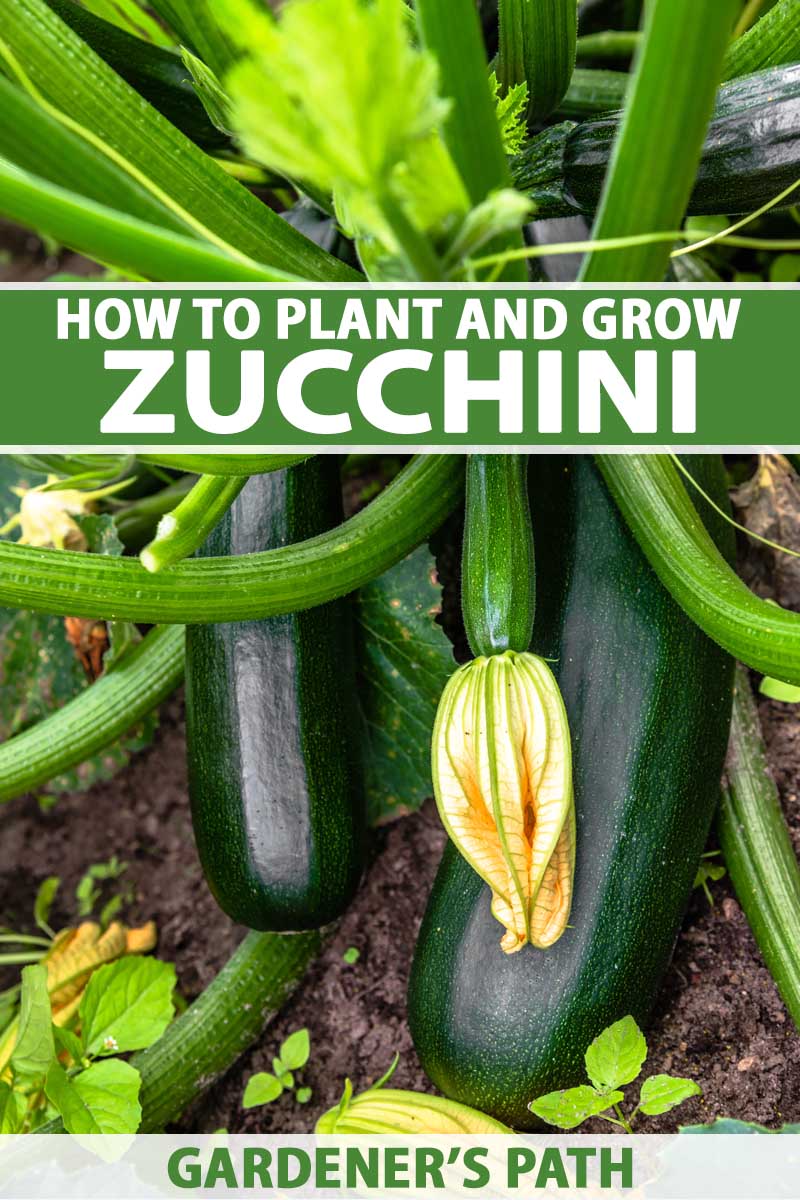
Managing Vining vs. Bush Varieties
Differences between vining and bush varieties
Zucchini plants come in two main growth habits: vining and bush varieties. Understanding the differences between these varieties is crucial for managing their spacing requirements. Vining zucchini varieties have a more sprawling growth habit, producing long vines that can spread several feet in all directions. On the other hand, bush zucchini varieties are more compact and do not spread as much. These growth habits impact the overall space requirements and management strategies for each type of zucchini plant.
Spacing considerations for vining zucchini
Vining zucchini plants require more space compared to their bush counterparts due to their sprawling growth habit. When spacing vining zucchini plants, aim for a row spacing of at least 4 to 6 feet (1.2 to 1.8 meters) to provide ample room for vine expansion. For individual plant spacing, aim for a distance of 3 to 4 feet (0.9 to 1.2 meters) between each vining zucchini plant. This spacing allows the vines to spread without overcrowding and facilitates adequate airflow and sunlight exposure. Consider providing trellises or stakes for vining zucchini to support their upward growth.
Spacing considerations for bush zucchini
Bush zucchini varieties have a more compact growth habit, requiring less space compared to vining varieties. When spacing bush zucchini plants, aim for a row spacing of 3 to 4 feet (0.9 to 1.2 meters) to allow for ease of maintenance and airflow. For individual plant spacing, a distance of 2 to 3 feet (0.6 to 0.9 meters) between each bush zucchini plant is recommended. This spacing provides enough room for the plants to grow and spread their foliage without becoming overcrowded. Proper spacing for bush zucchini allows for efficient harvesting and encourages healthy plant development.
Monitoring and Adjusting Spacing
Regular plant inspections
Regularly inspecting your zucchini plants is essential for monitoring their growth and assessing spacing requirements. As the plants develop, observe their overall size, leaf spread, and vigor. Look for signs of overcrowding, such as intertwined foliage or competition for light and resources. Additionally, monitor for any signs of disease or pest infestations that may have been facilitated by inadequate spacing. By conducting regular plant inspections, you can identify any spacing adjustments needed and take proactive measures to maintain the overall health and productivity of your zucchini plants.
Thinning overcrowded plants
If you notice that your zucchini plants have become overcrowded, thinning is a necessary practice to promote optimal growth. Thinning involves removing excess plants to create more space and reduce competition. If the individual plant spacing is not adequate, it can result in stunted growth, reduced yields, and increased susceptibility to diseases and pests. When thinning, carefully remove the excess plants, preserving the healthiest and most vigorous specimens. Thinning should be done during the early stages of plant development to minimize damage and disturbance to the remaining plants.
Factors that may require adjustments
While spacing guidelines provide a general framework for planting and managing zucchini, there are factors that may require adjustments in spacing. Environmental conditions, such as the availability of sunlight and water, can influence the growth and size of zucchini plants. If your zucchini plants are receiving less sunlight than recommended or if you experience irregular rainfall patterns, they may require more space to compensate for reduced growth. Additionally, consider the health and vitality of the plants. If certain plants are thriving more than others, it may be necessary to adjust spacing to ensure adequate resources for all plants in the garden bed.
In conclusion, proper spacing is essential for successful zucchini cultivation. Whether you choose to direct seed or transplant your zucchini plants, providing adequate row and individual plant spacing is crucial. Consider alternative methods such as companion planting or intercropping to optimize space utilization and create a more diverse garden ecosystem. Regularly monitor and adjust spacing as needed to ensure optimal plant development and productivity. With the right spacing and management, your zucchini plants will thrive, providing you with a bountiful harvest of this delicious summer vegetable. Happy gardening!
